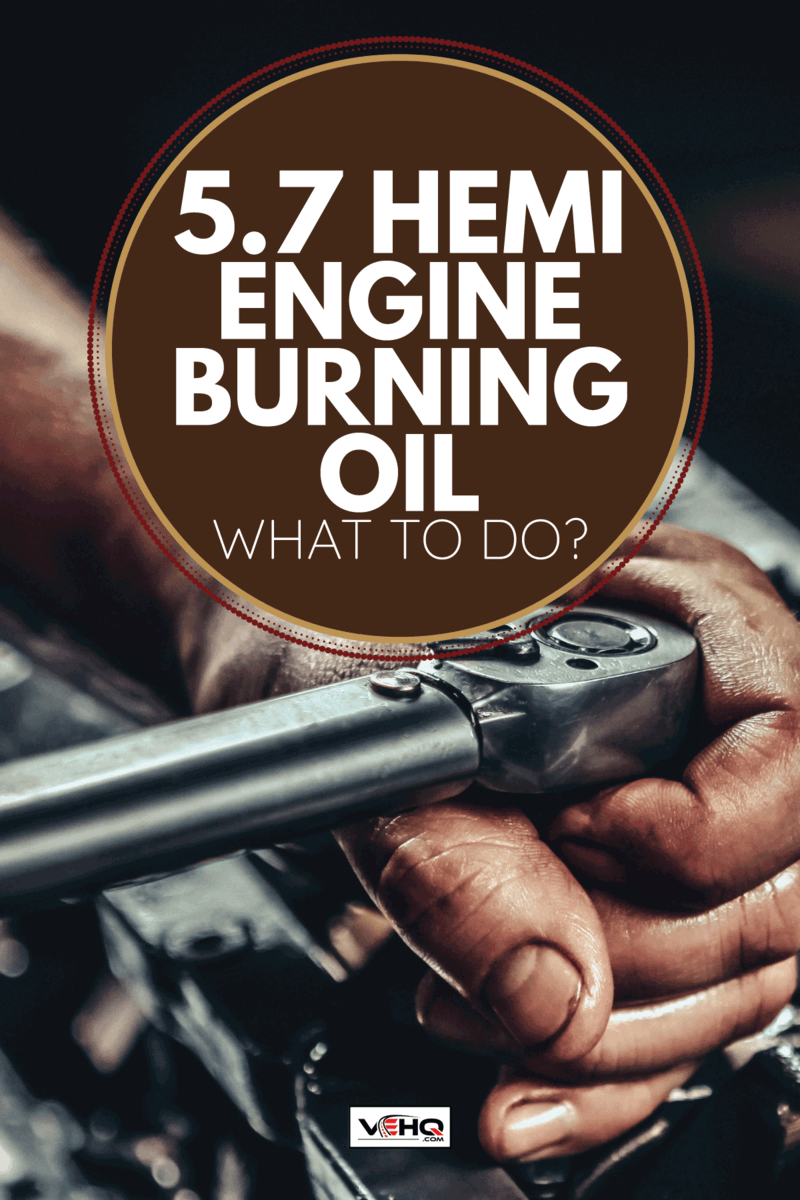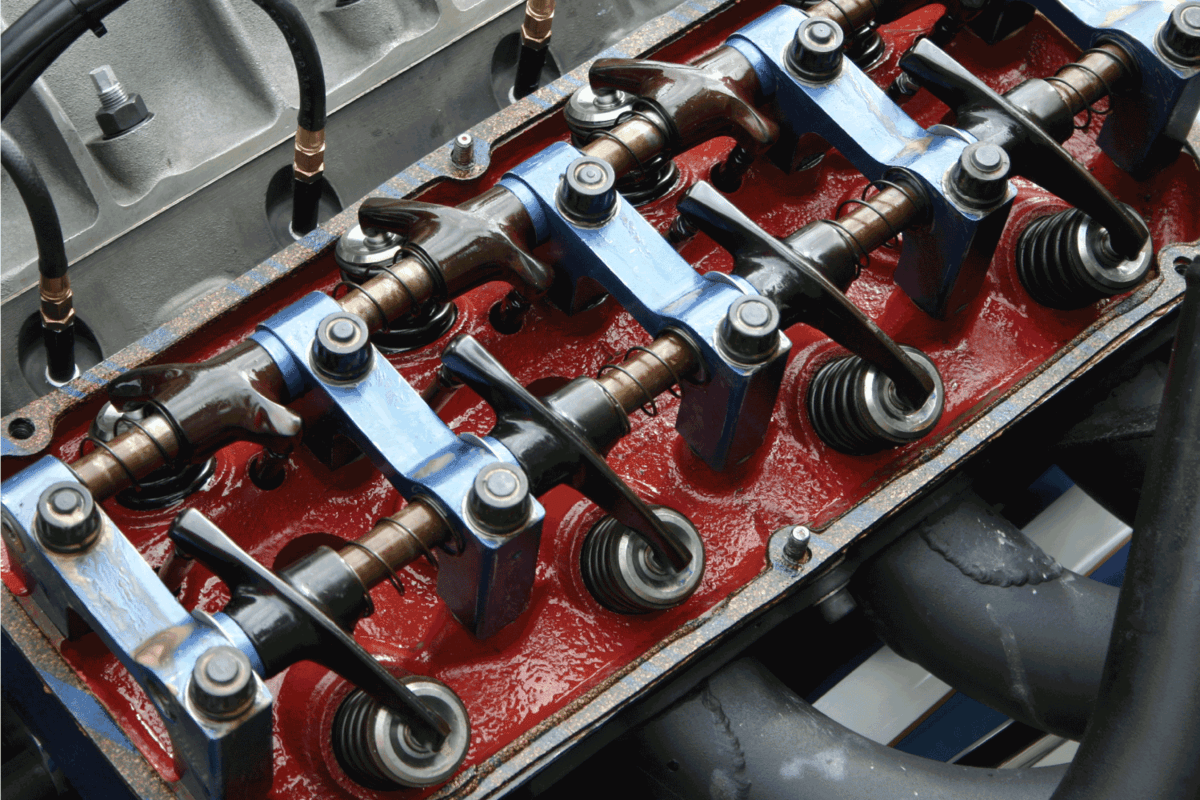Do you regularly check your Hemi engine's dipstick and it seems oil is depleting too quickly? That could be a big sign of your Hemi Engine burning oil. We've done the research for you and found a handful of reasons why your engine isn't running at top standard.
White or blue smoke is a tell-tale sign that you've got an oil issue. If you're overheating your car with poor exhaust systems, the internal parts start to corrode. Corrosion leads to leaks, blown heads, and a big trip to the shop. Check the following to pinpoint burning oil as the cause:
- PCV Valve
- Coolant Overflow
- Type of Oil
- Blown Head Gasket
- Spark Plugs
What might seem like small parts can cause a huge disruption to the high functioning of your engine. When your vehicle begins to smoke, stall, smell like oil, or the oil light comes on, don't overwork the engine. Keep reading to get a breakdown of the most common reasons why a 5.7 Hemi engine would burn oil.

Troubleshooting The Issue
Begin by looking at each of these things individually. Parts you can't reach can always be looked at by a service technician when you're doing regular maintenance. Most are straightforward and inexpensive fixes that could save you from blowing out your engine. Each listed part plays a role in how well your engine will handle the daily wear and tear put on it.
PCV Valve
Found on the bottom of your engine, the PCV is the positive crankcase ventilation. The purpose of the PCV is to hold in your motor oil. There are instances when exhaust fumes get caught in the crankcase, reacting in a way that turns the oil into sludge. Engine oil is designed to be thin and able to move through the small parts of the pistons. Thick sludge will clog openings, leading to pressured tubs and heads that can burst.
Click here to view this PCV Valve on Amazon.
Coolant Overflow
Coolant is the self-added fluid that keeps the temperature of your engine in check. Also referred to as antifreeze, it can begin to leak from overfilling, a bad radiator cap, or a malfunctioning thermostat. Since it expands as it heats, it can begin to seep into surrounding mechanics leading to corrosion and react negatively with other oils.
Type of engine oil/filter
There is some debate over the type of engine oil best for Hemi engines. Your owner's manual will tell you which is recommended by the manufacturer, but you can always switch it if needed. 5W-20 is the most used for Hemis; however, Hemi forums swear by conventional instead of synthetic. It seems that the synthetic oils are too thin and contain too many additives for the combustion chamber.
Click here to view Mopar Oil and Filter on Amazon.
Also, remember to check your oil filter. Cheap filters wear quickly, leading to impurities passing into your engine and hardening on the surface. As the particles grow in size and cover your pistons, oil cannot pass through and can cause pressure to build up and leak oil through heads. Not to mention, if oil becomes too thick, it won't cycle through your system as easily and no lubrication means rougher surface contact.
Blown gasket head
A blown head gasket will cause leakage of the coolant and gases into the cylinders. Oil escapes through the cracks and into the exhaust, causing smoke. White smoke is an indication of a blown head but not major leaking. Blue smoke is an indication that the head is blown, leaking, and burning. Check your cylinder plugs for any sort of thick sludge. If you find any, it's time for a replacement.
Spark Plugs
Spark plugs are generally hand-sized parts that catch the electricity in the air to mix with the fuel and ignite your engine. Worn plugs can cause misfires, poor acceleration, and decreased fuel economy since oil isn't burning as it should. With the engine working so much harder, the overall stress will begin to affect the rest of the system.
What Is The Best Oil To Run In A 5.7 Hemi Engine?
5W-20 is the most common oil for Hemi engines, but 5W-30 can be used if you want a thicker pour. Pennzoil, Shell Helix, and Formula Shell can be found at retail stores and maintenance shops.
Synthetic oil is a thinner base with additives to extend the oil's life span. Conventional is usually more affordable and made without additives. There is also a synthetic blend, which is a combination of synthetic and conventional without all the extra additives. Synthetic blends are a great choice if you're on the fence and don't want any extras going into your engine.
Click here to view Pennzoil conventional oil on Amazon.
Regularly check your dipstick and keep track of oil levels. This is especially important to check if your vehicle sits for long periods since additives can harden in low usage. When you do go in for oil changes or do it yourself, replace the oil filter. The better the oil you put in can be canceled out by a clogged or inefficient oil filter.
How Often Do You Need To Replace The Oil In A 5.7 Hemi Engine?
The vehicle's age and mileage can play into which oil is needed. Newer engines can fare just fine on 5W-20, but the oil type can be switched up once you move into a higher mileage range. Hemi owners on forums claim that switching to conventional oil has stopped ticking in the engine and ran better than before. Conventional oil requires more frequent oil changes, every 3,000-5,000 miles, versus 10,000-15,000 miles with synthetic.

How Many Miles Will A 5.7 Hemi Last?
Hemi's are built to last. With proper routine care, you'll be able to get 250,000-300,000 miles out of your engine. The Dodge Hemi lineup is a great example of this, having a history of lasting Hemi vehicles. Any engine is going to run into problems in its lifetime, especially if you're hauling or putting heavy usage on it. Frequent issues with Hemis are the valves, water pump, and thermostat.
What Makes Hemi Engines So Powerful?
Unlike other engines, a Hemi's pistons are more flattened and have a smaller chamber. The smaller combustion chamber reduces the amount of heat released and ends up burning fuel at higher temperatures. Another feature is that there are twin spark plugs that add more horsepower. There are also the valves put at a distance from each other, meaning you can install larger ones for maximum airflow.
Hemis, however, do require a higher quality fuel. Fuel with lower ethanol levels does not provide enough lubrication needed for the power put out by the engine. For better fuel economy, ensure the tread of your tire is still good and your air filter isn't dirty.
In Closing
There are a handful of reasons your 5.7 Hemi engine could be burning oil. Valves, heads, and overflow are the typical issues owners have and mechanics fix. Have techs check these areas every oil change to stay a step ahead before your car starts smoking. Hemi engines are built to last for thousands of miles and with proper upkeep can easily be a reliable means of transportation.
Before you go, check out these other posts that may be of interest to you:



